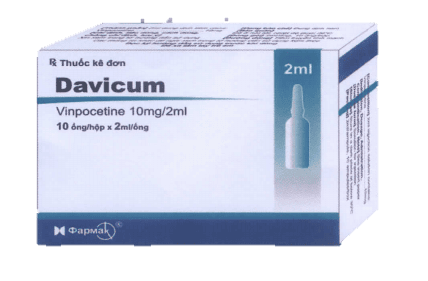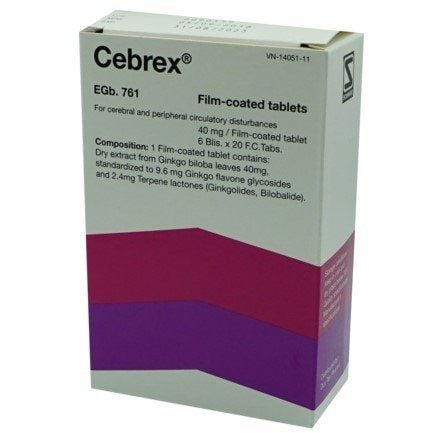This is an automatically translated article.
Measurement of cerebral blood flow is understood as the process of recording the resistance curve of cerebral blood vessels, when there is a high frequency and weak intensity (30KHz-1mA) alternating current flowing through. From the results obtained, doctors can accurately assess the hemodynamics of the brain and the changes in the state of the patient's cerebrovascular function.1. Value of cerebral blood flow measurement
Cerebral blood flow is the flow of blood to, through, and to the brain. Cerebral blood flow measurement is a technique to investigate cerebral circulation function, helping to evaluate the specific status of cerebral circulation flow, intensity/speed of blood flow to the brain and strong tone. From the results obtained, doctors can accurately assess the hemodynamics of the brain and the changes in the state of the patient's cerebrovascular function. At the same time, it is also possible to evaluate the patient's symptoms related to cerebral blood circulation such as: Headache, insomnia, dizziness... are caused by cerebrovascular disorders or anemia.Currently, performing cerebral blood flow measurement will help screen and detect problems in the patient's cerebral blood vessels such as: cerebral ischemia, cerebral blood circulation disorder or ischemic stroke, ...

Đo lưu huyết não là kỹ thuật thăm dò chức năng tuần hoàn của não
2. Advantages/disadvantages of cerebral blood flow measurement technique
Advantages of measuring cerebral blood flow:It is a safe technique and does not cause harm to the patient; This technique of brain circulation function can be performed many times for a long time, helping to monitor the effectiveness of treatment, research or drug use; The technique of measuring cerebral blood flow can be performed in patients in severe states such as: increased cranial pressure, coma, high fever, surgery... Disadvantages of measuring cerebral blood flow:
Not all cases The received cerebral blood flow measurement parameters also fully and accurately reflect the state of the brain's circulatory flow. The results obtained will depend on factors such as: blood viscosity, heart rate, intracranial pressure, blood pressure, use of vasopressors,... The process of measuring cerebral blood flow may be affected by the surrounding environment such as: ambient temperature, noise... In case the doctor/technologist performs cerebral blood flow recording and places the electrodes differently, applying conductive genes is not enough, bandages The fixation is not tight enough or the patient is lying down a lot, sedentary, ... can lead to errors or inaccurate results.
3. When should cerebral blood flow be measured?
Usually, the doctor will advise the patient to measure cerebral blood flow in the case of:Feeling numbness in the limbs; Having sleep disorders (Insomnia, sleeping or dreaming, not sleeping deeply...) Attention disorders (Working without concentration...) Frequent dizziness; Frequent headaches; Have high blood pressure ; Consciousness disorder ; Memory disorders (memory impairment or forgetfulness...) Thinking and intellectual disorders (incoherent thinking, logic...)

Khi bị tê bì tay chân bác sĩ sẽ khuyên người bệnh đo lưu huyết não
4. Cerebral blood flow measurement procedure
The procedure for measuring cerebral blood flow includes the following steps:Preparation:
The patient washes his hair clean, does not use stimulants/sedatives before measuring cerebral blood flow. Conduct:
Instruct the patient to sit back in a chair, back straight, psychologically comfortable, relax, relax muscles and close eyes; The technician measuring cerebral blood flow will wrap an elastic band about 4cm wide around the patient's head; Apply gel to the electrodes and attach the electrodes to the specified positions on the patient's head; Implement the technique of measuring cerebral blood flow on a computer with specialized software installed; Print the measurement results on paper. Remove the electrodes from the patient. At the same time, clean the electrode attachment sites on the patient. After finishing the technique, the patient will receive 1 record. The doctor will base on the results on the log to analyze the patient's cerebral blood flow. Time to measure cerebral blood flow from 10-15 minutes. During the procedure, the patient needs to cooperate and sit still. Currently, the technique of measuring cerebral blood flow is deployed and implemented by Vinmec International General Hospital in order to early screen diseases related to the brain of patients. To protect health and prevent complications, when detecting warning signs of encephalopathy, people need to go to the hospital to be examined by a neurologist. The Department of Neurology at Vinmec has the function of examining, diagnosing, consulting and treating diseases related to neurological factors, including headaches, vestibular syndrome, cerebellar syndrome, dementia intellectual,...
Neurological examination at Vinmec, customers will be:
Visited by a team of highly qualified and experienced experts such as: Doctor Nguyen Thi Minh Phuong, Doctor Bui Ngoc Phuong Hoa, Doctor Vu Duy Dung ... State-of-the-art equipment, comparable to major hospitals in the world: The most modern operating room in the world; The most modern silent magnetic resonance imaging machine in Southeast Asia; The 16-sequence PET/CT and SPECT/CT systems help in early detection of neurological damage even when there are no symptoms of the disease. Apply the most advanced intensive treatment techniques in the world in treatment.
Please dial HOTLINE for more information or register for an appointment HERE. Download MyVinmec app to make appointments faster and to manage your bookings easily.













